English fleet and supply problems
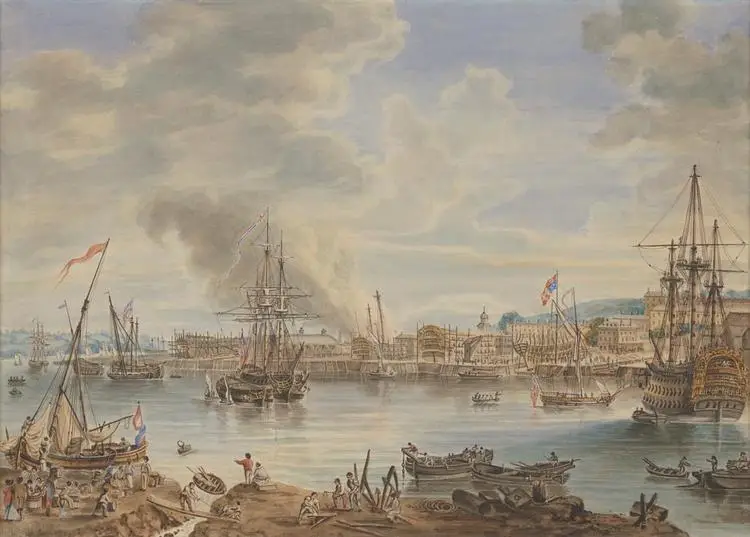
Chatham Dockyard in 1790.
When we talk about fleets different countries - we make sure to clarify their affiliation - for example, the Russian Imperial Navy, the Dutch Royal Navy, etc., and only one fleet of the world, according to tradition, does not require clarification - this is the Royal Navy or Royal Navy.
It is clear that we are talking about the British, but it must be said that many countries participated in the creation of their fleet by supplying the necessary resources.
Which countries? What place did supplies for the fleet generally occupy in England's trade?
Let's talk about it.
Tree
In one of the articles, we already talked about the fact that by the middle of the 1730th century, serious problems began with wood in England, and by the XNUMXs, all available oak trees had actually been cut down. No, oak groves still remained, of course, but along the coast and rivers there were virtually no forests convenient for transportation to the shipyard.
But the 1730s are again a new confrontation with France and Spain, this is the protection and expansion of sea communications.
What should I do? This means that ship timber must be purchased somewhere. And you need a lot of it. Let us remember that the construction of a 74-gun battleship requires approximately 3 loads of wood, and the ship had to be repaired every two to three years, and this again wastes wood. Well, once every 000 years - deep timbering, which required 10–2 loads.
But there were ships of a higher rank. For example, the 90-gun Blenheim, built in 1761, took 3 loads of wood. 773-gun Royal George (built in 100) – 1756 loads.
To be clear, 3 loads of timber is 000 logs; a comparable number of oak trees grew on 2 acres (000 hectares). In 57, Royal Nevi consisted of 23 ships of all types, of which 1803 were ships with 608 guns. In 81, the size of the fleet increased to 74 ships of all types, including 1813 ships with 920 guns. In 143, wood consumption by the fleet was 74 loads annually, in 1801 it increased to 36 loads, and in 000 - to 1803 loads.
Again, let's explain.
For example, 53 loads in 000 is 1810 oak trees that must grow somewhere (and an oak tree takes a long time to grow), then must be cut down and delivered to England. The British thought about this topic for a long time, and the Baltic became the main region that eventually began to supply Royal Navy with oak and ship timber. The main ports for the export of Baltic oak were Danzig, Stettin, Königsberg and Memel, as well as Swedish and Norwegian ports.
Moreover, in the period from 1756 to 1764, the main country for oak export was Norway, from where 4/5 of all wood purchased by the British in the Baltic came. However, by the 1760s, the timber began to run out in Norway, and in order not to lose such a profitable source of money, Danish-Norwegian merchants (at that time Norway belonged to Denmark) began to buy oak logs in Germany and Poland.
The British, in principle, were happy with this, although they bought Polish and Prussian oak, both from the manufacturers themselves and from Danish resellers. Small purchases of oak were also carried out in Russian Riga, but were strictly limited by the Russian government. In Arkhangelsk, the British purchased larch.
In Russian ports, purchases were made mainly of pine and spruce trees, from which masts were made. By the 1750s, Norwegian spruce trees were considered thin and brittle compared to Russian ones; in the English navy they even received the nickname “Satan’s spears.”
Timber exports in the interests of Royal Navy accounted for approximately 1/6 of all English exports and were recognized as a strategic enterprise on which the greatness of England rests.
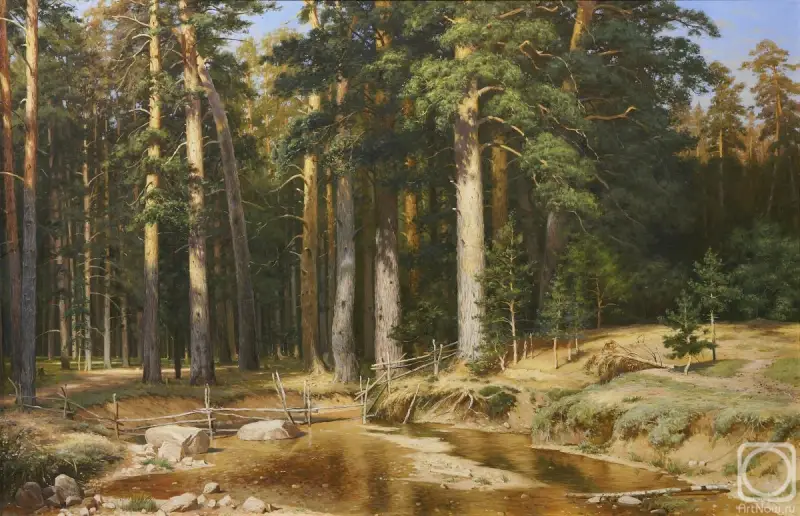
Alexander Vladimirov. Ship Grove
With the beginning of the Continental Blockade (1807–1812), the Baltic ports became largely closed to English merchants, and they switched to exporting timber from Canada. If 1807 loads of timber were exported from there in 27, then in 000 there were already 1808 loads, and in 57 – 000 loads. At the same time, exports from the Baltic fell from 1809 loads in 93 to 000 loads in 200. In fact, England only had any trade with Sweden, and these 000 loads are 1807 percent Swedish.
How much did this annual timber export cost Britain?
In 1801 the export of timber for the navy amounted to £682, representing 000% of the total value of imports. In 2,14 the amount had risen to £1810 and represented 808% of the total value of imports.
Separately, it is worth mentioning mast wood, whose exports increased from 4 logs in 472 to 1803 logs in 23, in the last figure 053 masts were exported from the Baltic, the rest from Canada.
Resin and tar
Resin was then divided into white (white stuff) and black (black stuff). The white tar was a mixture of whale oil, pine tar and sulfur. The resin was heated to a boil, and whale oil and sulfur were added. The result was an effective putty, which also protected against woodworms (in fact, this is why sulfur was added).
But by the 1770s, whales in the Northern Baltic and off the coast of Norway were being bred and made into black tar—essentially a mixture of pine resin and tar.
By the beginning of the 18th century, Swedish resin was considered the highest quality resin in England. The British tried this way and that to get rid of their dependence on Swedish resin, tried to start resin production in the Thirteen Colonies, but time after time they returned to the Swedish market, because they could not find better quality material.
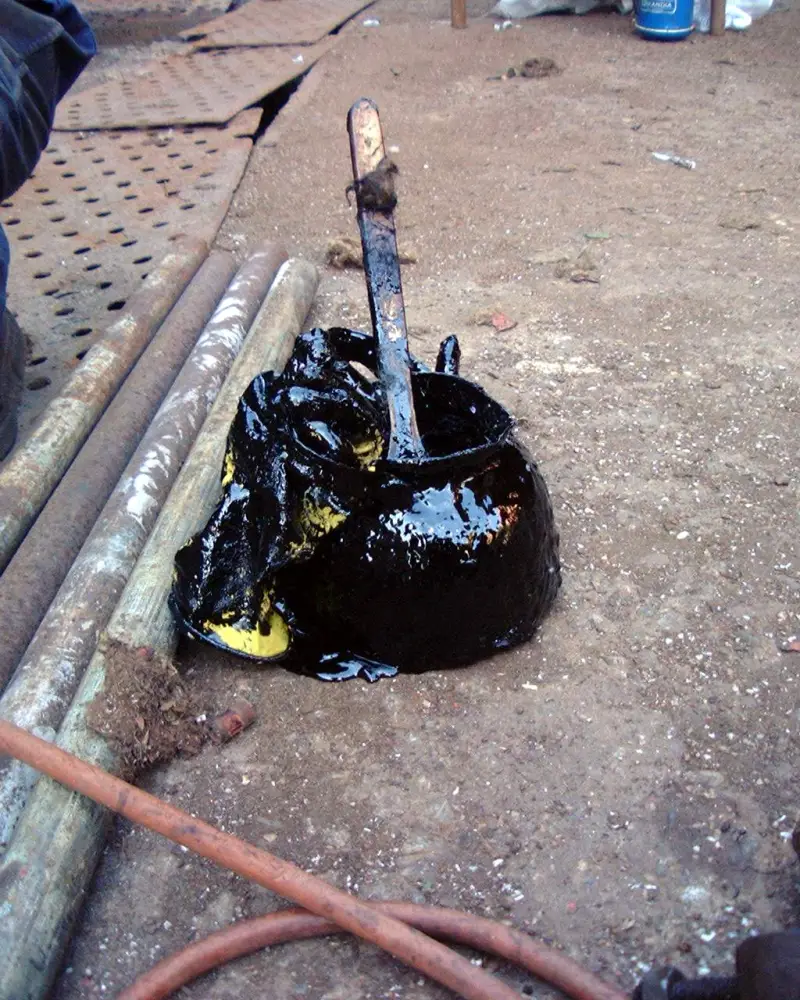
Bucket of black stuff for use on a ship
But in 1703, the Swedish Stockholm Tar Company refused to supply the resin, and just at that moment England and France fought in the War of the Spanish Succession, and the Admiralty considered that this posed a threat to the security of England. Therefore, over the next 4 years, resin production was established in the American colonies, which largely covered the need. However, the quality of American resin did not stand up to criticism, so American resin was soon replaced by Danish-Norwegian and Russian ones.
On average, the cost of importing resin and tar was approximately 84 pounds, except in 000, when resins were purchased for a ridiculous 1703 pounds.
Hemp
Hemp was a critical resource for Royal Navy because it was used to make ropes. Until the 1714th century, or rather until 90, hemp was purchased in Sweden, but after the Swedish King Charles XII banned trade with England, the British purchased a test batch of hemp in Russia, and it turned out to be much better in quality. That is why almost XNUMX% of the hemp in the British fleet was of Russian origin. Small purchases were also made in Germany and Poland.
For example, in 1806, 86% of hemp in England was imported from Russia, 10% from Prussia, and 6% from Poland. Attempts to purchase hemp in Spain, France, and the colonies only strengthened the British in the opinion that there was no alternative to Russian hemp - rope made from Russian hemp served in the tropics for up to 3 years, in northern latitudes - 5 years. A rope made of French or Spanish hemp in the Caribbean Sea failed after a year, in northern latitudes - after two years.
Well, in 1807, after Russia joined the Continental blockade, great difficulties began in England. If in 1807 hemp was purchased in Russian ports for 639 pounds sterling, then in 507 - only about 1808 thousand pounds sterling.
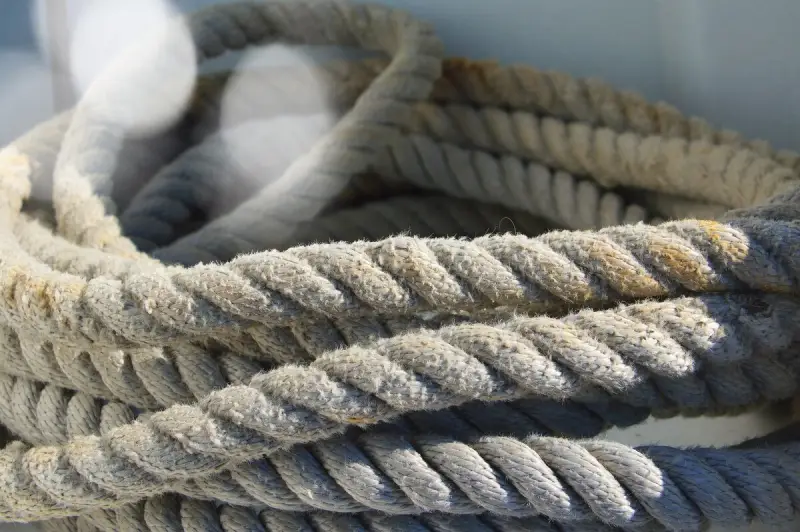
Hemp rope.
The problem was quite acute, but, fortunately for the British, their warehouses at that time were filled with hemp, and they were able to calmly look for alternatives to Russian goods, or hope that after some time the situation would improve. It changed by 1810, when Russia, bypassing the Continental blockade, began shipping hemp to England.
As for the cost.
In 1801, Britain purchased £636 worth of hemp, or 000% of the value of all imports. In 2, spending increased to £1810, representing 752% of total imports.
Powder
As everyone understands, gunpowder was critical to the navy.
What was black powder of that time?
This is saltpeter, charcoal and sulfur, mixed in proportions of 75%, 15% and 10%. By the middle of the XNUMXth century, India was the main supplier of saltpeter for Britain, sulfur was purchased in the Austrian provinces of Italy, and charcoal was its own, home-grown, English.
However, here is the problem - the weather in England is dank, rainy, charcoal was created by ordinary burning of wood, so it was not of the best quality, which led the British in the 1760s to significant difficulties in the production of gunpowder. In many ways, the matter was resolved simply - gunpowder factories were moved to India. Those that remained in England fully provided the island army and some of the small ships of the fleet with gunpowder.
Hardware
Since the 17th century, the main purchases of iron for the needs of the fleet were made in Sweden. In the 18th century, Spain, Russia and the American colonies joined the iron exporters.
By the end of the 6th century, purchases of iron in Russia increased, since Russian iron, although of lower quality, was almost XNUMX times cheaper than Swedish. Russia came in second place in iron exports to England after Sweden.
The Swedes exported iron in rods. Russians are in pigs. Only in the 1780s did Russia also begin to supply bar iron, but even the second grade of Swedish iron was considered in England to be of higher quality than the iron of any other country.
In 1801 the value of iron exports was £331 or 000% of total exports. In 1,04 the value had dropped to £1810 or 197% of all exports.
Why did this happen?
The fact is that in England itself there is a lot of iron ore. But with wood and charcoal, as we remember, there were great difficulties. Since the beginning of the 18th century, the British have tried to replace charcoal with stone, fortunately they have a lot of deposits of the latter. But coal did not burn as smoothly as wood coal, and iron turned out even worse than Russian and American.
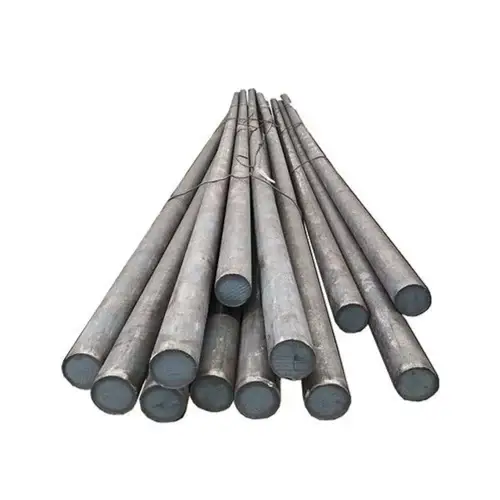
Bar iron.
It was only in the 1760s that the technology for producing coke from coal was developed, and by the 1780s, English ferrous metallurgy finally began to produce some significant volumes. Well, by 1810 England was gradually replacing the export of foreign iron with its own.
Nevertheless, purchases of foreign iron were not interrupted, since the British re-exported iron to their own and foreign colonies (primarily to Spanish America). That is why, according to statistics from the Swedish company Jernkontoret, iron exports to England almost doubled from 1806 (224 tons) to 000 (1823 tons).
Conclusion
It is clear that we have not mentioned many more products that could well be considered. For example, after 1780 and the introduction of copper sheet cladding in the English fleet, the export of copper began to play a special role, which as a result the British transported from Sweden and Norway.
But even the above shows what difficulties the British Empire faced when building the first powerful fleet, and at the same time, how the Admiralty and the government were able to successfully solve the problems of supplies for the fleet and the construction of ships, essentially, from foreign resources.
References:
1. Robert G. Albion “Forests and Sea Power: The Timber Problem of the Royal Navy 1652–1862” - Cambridge, MA: Harvard University Press, 1926.
2. HSK Kent “War and Trade in Northern Seas: Anglo-Scandinavian Economic Relations in the mid-Eighteenth Century” - Cambridge, UK: Cambridge University Press, 1973.
3. Richard Harding “Seapower and Naval Warfare 1650–1830” - London: University College Press, 1999.
4. Joseph J. Malone, “England and the Baltic Naval Stores Trade in the Seventeenth and Eighteenth Centuries,” Mariner's Mirror No. 58 (November 1972): 384–385.
5. NAM Rodger “The Command of the Ocean: A Naval History of Britain, 1649–1815” - New York: W. W. Norton & Company, 2004.
6. Russell M. Oster “Great Britain in the Age of Sail: Scarce Resources, Ruthless Actions and Consequences” - Maxwell Air Force Base, Alabama, 2015.
Information